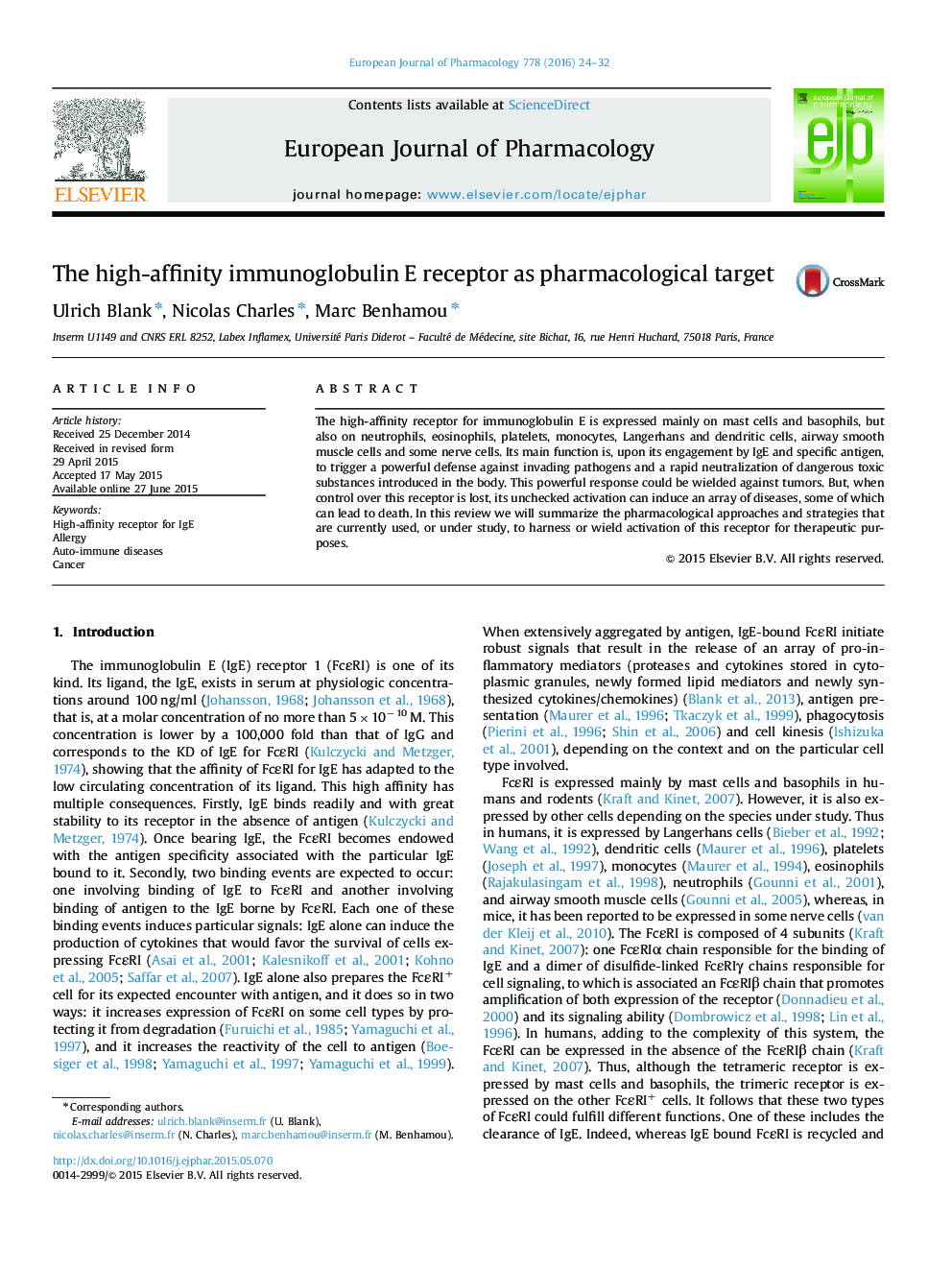| Article ID | Journal | Published Year | Pages | File Type |
|---|---|---|---|---|
| 2531057 | European Journal of Pharmacology | 2016 | 9 Pages |
The high-affinity receptor for immunoglobulin E is expressed mainly on mast cells and basophils, but also on neutrophils, eosinophils, platelets, monocytes, Langerhans and dendritic cells, airway smooth muscle cells and some nerve cells. Its main function is, upon its engagement by IgE and specific antigen, to trigger a powerful defense against invading pathogens and a rapid neutralization of dangerous toxic substances introduced in the body. This powerful response could be wielded against tumors. But, when control over this receptor is lost, its unchecked activation can induce an array of diseases, some of which can lead to death. In this review we will summarize the pharmacological approaches and strategies that are currently used, or under study, to harness or wield activation of this receptor for therapeutic purposes.
